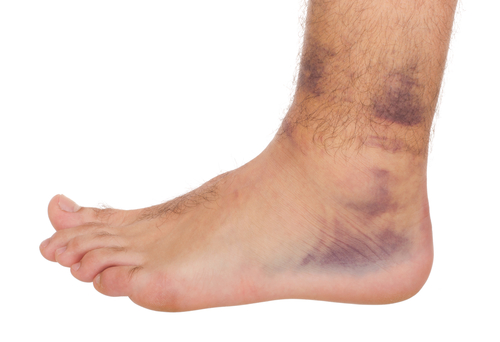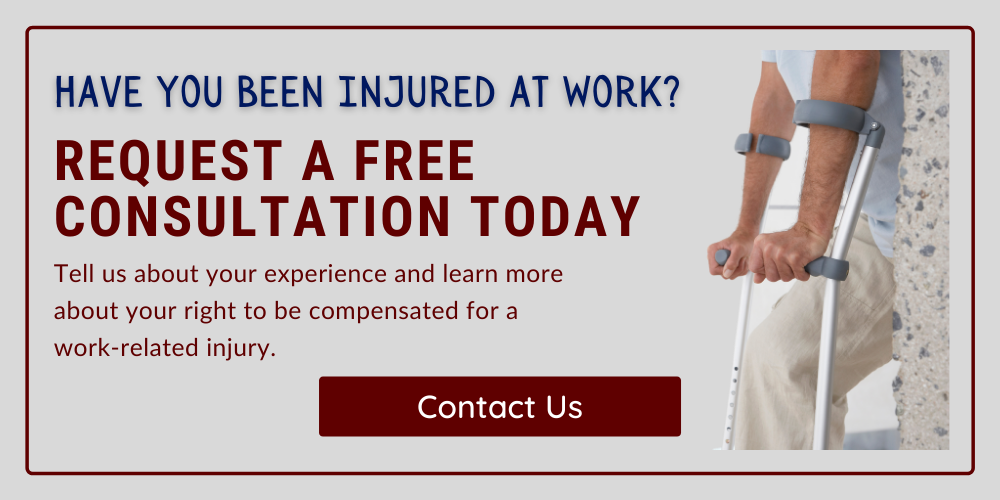Sprains, puncture wounds, and fractures are among the most common reasons for filing a California workers’ compensation claim

California workers’ compensation claims are filed for a variety of reasons. Different kinds of injuries may trigger claims for different kind of benefits. Here are some of the most common workplace injuries and resulting claims for workers’ compensation benefits that injured workers make.
Strains and Sprains
The most common injuries for which employees make a workers’ compensation claim are sprains and strains. Sprains and strains are injuries to muscles or connective tissues. They are particularly likely to occur in the manufacturing, moving, transportation, and warehouse industries, but almost any job can result in a strain or sprain.
Sprains occur when ligaments are stretched or torn. Ligaments are the bands of tissues that connect two bones in a joint. Ankles and knees are the joints most commonly affected by sprains.
Strains occur when muscles or tendons are stretched or torn. Tendons are cords of tissue that connect muscles to bones. Strains often cause pain in the lower back, upper back, shoulders, and hamstrings.
Strains and sprains are generally caused by putting too much stress on muscles, tendons, or ligaments. For example, strains and sprains can be caused by:
• Lifting more weight than a muscle can bear
• Pushing, pulling, or carrying more weight than a muscle can bear
• Stressing muscles with awkward movements, including twisting while lifting
• Twisting ligaments (for example) by stepping in a hole
• Collisions that exert force against ligaments in knees
• Slipping, tripping, or falling from a height
• Repetitive motion
Strains and sprains frequently require medical attention. When evaluation or treatment is necessary, California employers are required to provide injured workers with necessary treatment. They usually provide treatment by referring injured workers to a medical provider network that has a contract with the employer or its workers’ compensation insurance company.
Serious injuries, such as a torn ligament in an ankle or knee, may require surgical repair. Employers must sometimes provide that treatment as a workers’ compensation benefit.
A physician may place work restrictions on an employee that will give a strain or sprain time to heal. When a physician imposes restrictions, an employer is required make attempts to comply with those restrictions. However, employers are sometimes unable to accommodate the restrictions.
Cuts and Punctures
Cuts and punctures are usually caused by handling materials or tools that are required for a job. Cuts and punctures are common injuries in the construction, manufacturing, and retail industries. They can also be caused by other work duties, including by work-related traffic accidents.
Workers’ compensation benefits are not triggered by minor cuts that can be treated with first aid. However, employers must provide medical treatment when cuts and wounds require stitches or other medical attention.
Infection is always a risk that accompanies puncture wounds. When a wound becomes infected, injured workers may need to be hospitalized until the infection is under control. Cuts or punctures may lead to work restrictions. They may also prevent an injured worker from returning to work until the wound heals.
Contusions
Contusions are bruises on any part of the body. While a minor contusion might not require treatment or cause one to miss work, deep bruises can make it difficult for employees to walk, bend, sit, climb stairs, or engage in other necessary work activities.
Contusions are usually caused by an impact against the body. A collision with equipment (such as a forklift), falling objects, another employee inadvertently striking the injured worker with materials that are being moved, and falling down can all cause contusions.
Contusions may also be related to more serious injuries, like crushed or damaged organs or internal bleeding. Injured workers should notify their employers that they need a medical evaluation if a contusion seems unusually painful, if it inhibits motion, or the pain seems to growing worse with time.
Fractures
Broken or fractured bones can be caused by falls, impacts with equipment, equipment malfunctions, traffic accidents, and falling objects. Retail employees who climb ladders to retrieve merchandise, construction workers, employees in the manufacturing industry, and delivery drivers are among the employees who commonly make workers’ compensation claims for fractures.
Broken bones may take weeks or months to heal. They often prevent injured workers from working until healing is substantially complete. Injured workers may be returned to work with restrictions until the fracture completely heals. While most fractures heal, some broken bones result in lasting pain or cause other complications that lead to a permanent impairment.
Other Workplace Injuries
Other work-related injuries that are less common but sufficiently serious to trigger claims for workers’ compensation benefits include:
• Diseases caused by occupational exposure to chemicals, toxic substances, or environmental contaminants
• Electric shock
• Hernias
• Burns
• Brain injuries
• Hearing loss
• Dental injuries
• Loss of vision
• Amputations
• Organ damage
• Mental health injuries
• Injuries resulting from fights at work
Whenever a work-related injury needs medical attention, employers must generally provide treatment at no cost to the injured worker. Other workers’ compensation benefits may also be available, depending on the consequences of the injury.
Workers’ Compensation Benefits
In addition to medical treatment, the injuries described above lead to workers’ compensation claims for temporary and total disability benefits.
Some work injuries can prevent one from working at all. Some work injuries may cause an injured worker to be returned work with certain limitations or restrictions. If the work restrictions prevent the injured worker from doing the work the employer is willing to offer, the injured worker will receive temporary disability benefits until he is able to return to work.
Some injuries, including back injuries, can produce lingering pain and a lasting impairment. If an impairment is likely to be permanent, an injured worker is entitled to permanent disability benefits.
Workers’ compensation lawyers help injured workers obtain all the benefits they are entitled to receive. When an injury causes a permanent disability, a workers’ compensation lawyer helps injured workers stand up to insurance claims administrators who want to settle claims for less than they are worth. To have your workplace injury evaluated by an experienced Santa Rosa workers’ compensation attorney, contact Kneisler & Schondel at (707) 542-5132. You can also ask us a question by submitting our online contact form.


